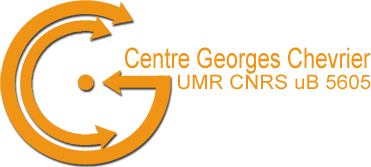THE PROGECT : LE ROCK PROGRESSIF ET LA RECHERCHE
Progressive rock and cultural identities - the Spanish case
0 0 1 854 4874 MSR, FAHS 40 11 5717 14.0 96 800x600 Normal 0 false false false EN-GB JA X-NONE /* Style Definitions */ table.MsoNormalTable {mso-style-name:"Table Normal"; mso-tstyle-rowband-size:0; mso-tstyle-colband-size:0; mso-style-noshow:yes; mso-style-priority:99; mso-style-parent:""; mso-padding-alt:0mm 5.4pt 0mm 5.4pt; mso-para-margin:0mm; mso-para-margin-bottom:.0001pt; mso-pagination:widow-orphan; font-size:10.0pt; font-family:Calibri;}
PROGRESSIVE ROCK & CULTURAL IDENTITIES: THE SPANISH CASE
By Eduardo G. Salueña
Spanish cultural environment has been totally determined by Franco’s dictatorship (1939-1975). An economical situation based on a heavy protectionism and a totalitarianism political attitude during the 40s and the 50s have resulted in a change of mind in the 60s, related to a new international role (especially with regard to the USA) and a reformist spirit. There was a conscious search of modernity by young people, according to the new ideas of countries like United Kingdom or France. This contributed to build a new identity of the Spanish people, more interested in foreign popular culture than in their own traditional roots (acquiring a new meaning, being closer to the European democracy than to the Spanish conservative political system). Of course, music was a very important source for young Spanish people of this period.
Progressive rock was one of the most important styles that have reflected this new attitude. From the last years of the 60s, psychedelic developments and some progressive parameters were assumed by pop groups like Brincos, Módulos or Mustang, that had evolved from a very successful song-structured style to a more conceptual work (and, of course, less commercial), characterized by longer compositions with some traditional East influences and a more abstract artistic design.
One of the most important Spanish works, released in 1974, was Ciclos by Canarios, a group that had some Soul roots (the band’s line-up included a brass section). This album was structured into four long tracks, inspired by Vivaldi’s Four Seasons (his music is re-arranged and mixed with new compositions) and using a philosophical and futuristic text as the basis for the lyrics (very close to Brave New World by Aldous Huxley). The use of some Baroque elements, vocal treatments from opera, chorale or Gregorian chant or analogical synthesizers and keyboards like Mellotron or Moog, had a very deep impact in Spanish underground popular culture, showing that it was possible to re-arrange a whole big classical work and create a new concept that featured new elements (comparing this work with artists like Emerson, Lake & Palmer or Wendy Carlos).
Along with these more international rapprochements, in Spain there have been four important scenes during the 70s (till early 80s), determined by some cultural differences but contributing to build a Spanish identity focused on richness and diversity, far from the English & European canon:
1) Cataluña & Levante (Mediterranean Region): its most important city is Barcelona. As an important and cosmopolitan port and a link to some European countries, it has developed the most avant-garde spirit in the country. Some of the most important musicians of the scene have developed a parallel profile as chamber music composers or free-jazz musicians. They usually incorporate some jazz elements and wind instruments used in “sardanas” (traditional dances of the region), especially by the bands labeled as “rock laietano” (from a very specific Barcelona neighborhood). They use “Catalán” language in their lyrics. Some important bands are Máquina!, Música Dispersa, Om, Iceberg, Fusioon, Gotic, Secta Sónica or Companyia Elèctrica Dharma.
2) Andalucía (South Region): its most important city is Seville. They had a big link with the USA (mainly because of Rota’s naval base), which has developed a very deep interest in rock and blues, styles that have been mixed with flamenco from the late 60s by some local musicians. Their compositions tend to be more lyrical, with strong vocal melodies (reinforced by synthesizers and electric guitar) and some Latin jazz-rock patterns (notably in the rhythm section and the piano sequences). Flamenco references are present especially in vocal registers, the use of Spanish guitar and some percussion elements as handclaps or cajón. They use “Andaluz” dialect in their lyrics. Some important bands are Smash, Triana, Alameda, Imán Califato Independiente, Mezquita, Cai, Tabletom or Medina Azahara.
3) Madrid & Castilla (Central Region): its most important city is Madrid, Spain’s capital and a key center for musicians from all Spanish regions. For those reasons, the bands that were established in Madrid were very eclectic, mixing folk roots from different parts of the country (often related to the origin of the musicians) and emphasizing the rock aesthetic, more than the jazz sounds (this would be later developed in a hard-rock and heavy scene during the 80s). They use Spanish language in their lyrics. Some important bands are Evolution, Cerebrum, Storm, Dolores, Granada, Guadalquivir or Ñu.
4) Galicia, Asturias, Cantabria, Euskadi & Navarra (Northern Regions): its most important region is Euskadi. The references of traditional music are very important for these bands, incorporating some rhythm structures (usually from rural dances), instrumentation (like bagpipes or percussion) and a folk-rock feeling based on the development of short instrumental motifs. There’s also a connection with the emergence of the Atlantic Europe aesthetic in the north of Spain. Depending on the region they can use official (“Galego” or “Euskera”) or non-official (“Bable”) languages. Some important bands are NHU, Crack, Bloque, Ibio, Itoiz, Errobi or Magdalena.
So, Spanish progressive music has been very important not only as a consequence of a growing opposition to Franco’s Dictatorship (searching for new identities linked to modernity), but an essential precedent for the new styles in the later decades, mixing electronic resources, an open-minded attitude for improvisation and the new uses of the own traditional music parameters.








